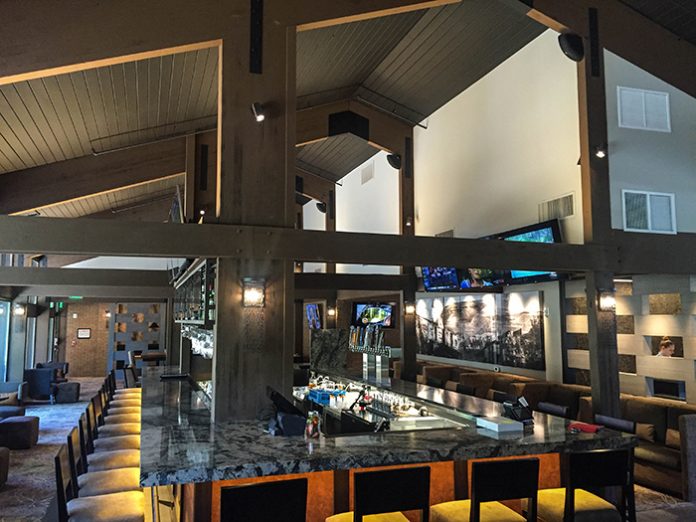Nestled on the banks of the beautiful Deschutes River, the Riverhouse on the Deschutes hotel provides first-class accommodations-including its A/V systems, designed and installed by Bend, Oregon, integrator Audio Visual Bend. “When the Riverhouse on the Deschutes was acquired by the Vesta Hospitality Group, they wanted new A/V systems with local support. Our entire business is commercial A/V, so they came to us.” begins Audio Visual Bend owner Tony Sprando. “We design every system we build, and we use a lot of Symetrix DSPs.”
For the hotel’s meeting spaces, notes Sprando, “We have a central hub location and A/V rack that everything runs to, and it’s based around a Symetrix Radius DSP. We distribute video from the projection system, as well as background music from Pandora Mood, to two meeting spaces, which can be combined or separated. Separate players can be switched to different Pandora channels for each room.”
Sprando’s team provided an auxiliary XLR microphone input in each room — great for DJ or podium mics. Wireless microphone systems also serve the entire space, with handheld and lapel mics in each room. Users can select background music or aux inputs using smartphone, tablet, or laptop browsers to control the Symetrix ARC-WEB embedded software control panels.
“The ARC-WEB panels have a digital readout with the name of the room, so users open a panel, and it says ‘The Deschutes South’ or ‘The Deschutes North,'” Sprando details. “Users hit the menu button and choose background music, video playback, or audio from a laptop, and they can set the volume. They also can control the system wirelessly from an iPad.”
Audio Visual Bend builds and tests their systems at their office, but customers often want last-minute changes during installation. “I give kudos to the Symetrix tech guy who helped with that,” credits Sprando. “He was efficient, fast, and super helpful in making those changes.”
While the Symetrix Radius was the right DSP for the meeting rooms, the A/V system on the other side of the building required a Symetrix Jupiter DSP. “The other side of the hotel has a full sports bar, restaurant, and lounge,” Sprando explains. “They have twelve TVs, and we needed to pull the audio feed off the cable box for the primary TV for when they want to watch one game on all of the TVs. We also installed two Pandora Mood players, one for the bar and one for the restaurant area. So we didn’t have many sources but we had to send audio everywhere, including the patio, the bathrooms, and so on. We only used three inputs but we used every output on the Jupiter.”
As always, the Audio Visual Bend team installed an ARC-WEB panel for the Jupiter-based system. “We also put an iPad mini on an iPort Surface Mount inductive sleeve so it mounts on the wall,” Sprando notes. “They love it because they can pull out the iPad, call up the Pandora app, change the channel, and then hit the other icon for the volume control. Every zone is broken out with a name, and they can turn whatever they want up or down.”
Sprando especially appreciates Symetrix’ ease of programming. “One big reason I chose Symetrix is that I could learn how to program it in 30 minutes,” he states. “The programming interface is beautiful and simple, and it looks and works the same as it does on the ARC control panel. I’ve had to program competing DSPs, and I was pulling my hair out; they have a web interface and a control panel that don’t look the same and don’t operate the same. Why not?”
Ease of use also affects the price. “Why, with other DSPs, do I have to make a high-priced buy-in and send my guys for a week of training someplace? That makes no sense,” Sprando insists. “Make it easy for me. That’s also the way we have to think for our customers: Keep it simple, like using a smartphone. Symetrix gets it right.”





